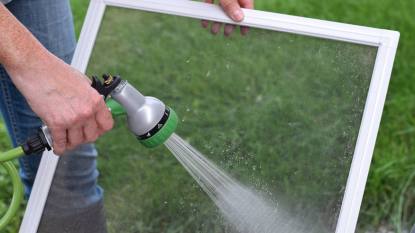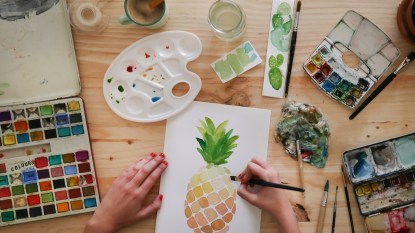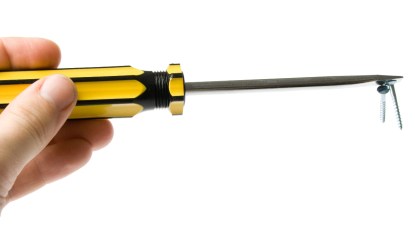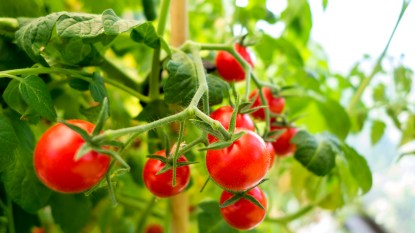Brighten Your Space with a DIY Terrarium: Garden Pros Share the Easy How-Tos
Easy displays revitalize your space and turn any corner into a mini oasis
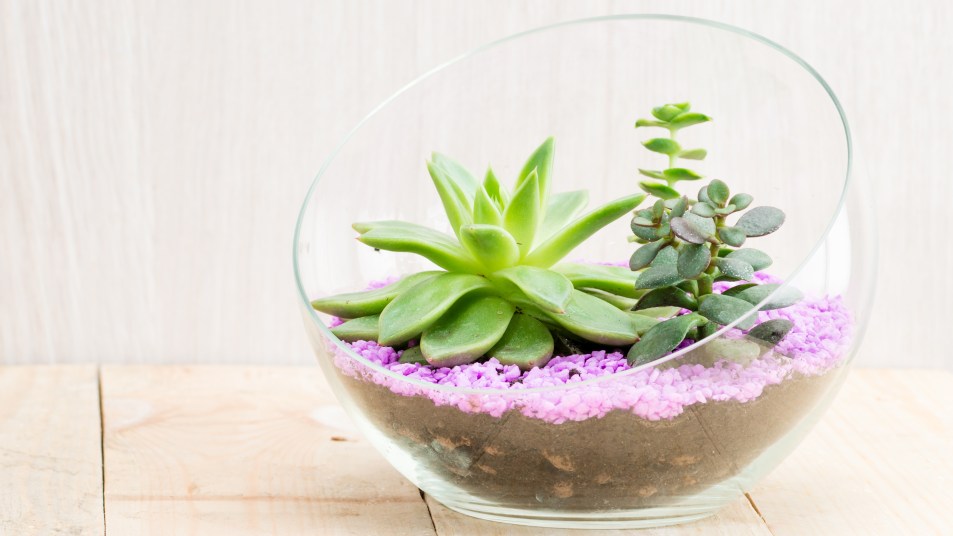
If you’re looking for a simple but effective decorative piece for your home or to gift to a loved one, look no farther than a terrarium! These mini glass gardens are easy to make and add life to any room without taking up much space. “Terrariums provide mini landscapes that bring the beauty of the outdoors in to brighten a dull winter view,” says Patricia Buzo, author of A Family Guide to Terrariums for Kids. Plus, you can make one from any jar, vase, drinking glass or even a fishbowl you already have on hand. Read on for easy, expert-approved ideas for how to make a terrarium.
Terrarium idea #1: A lush orchid vase
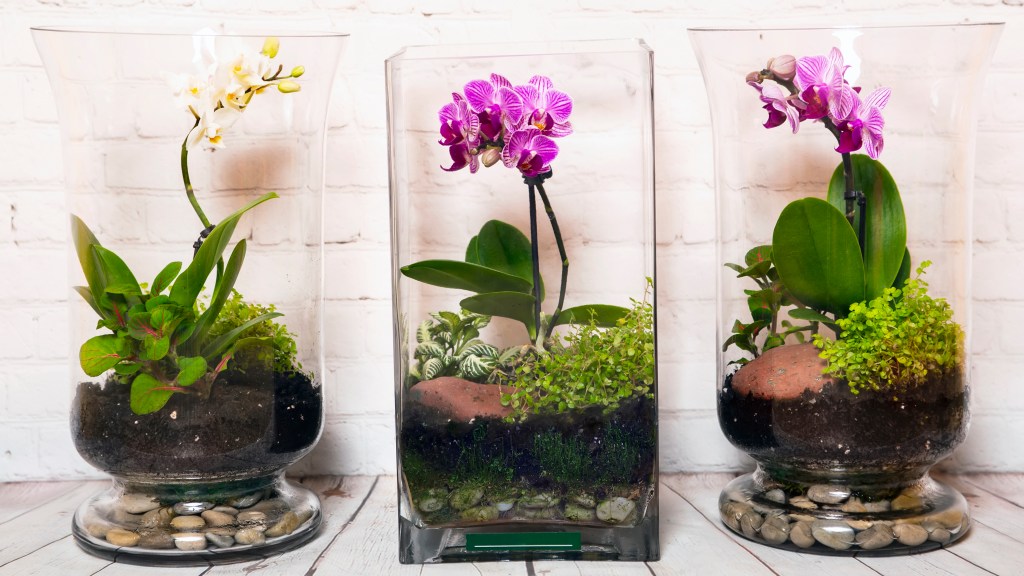
Styling a wide-mouth vase with orchids and green plants creates a whimsical scene, says Buzo. To make each, fill the bottom of a tall vase with a layer of pebbles or river rocks, then top with a layer of soil. Next, remove an orchid from its plastic pot and nestle its roots into the soil alongside a baby’s tears or nerve plant. Top the soil with a little preserved moss or a larger rock (to prevent moisture from evaporating out of soil). Set in bright, indirect light and water regularly.
Related: Plant Pros Share Their Top Tips for Reversing Root Rot — Plus, the #1 Way to Prevent It!
Terrarium idea #2: An angular succulent bowl
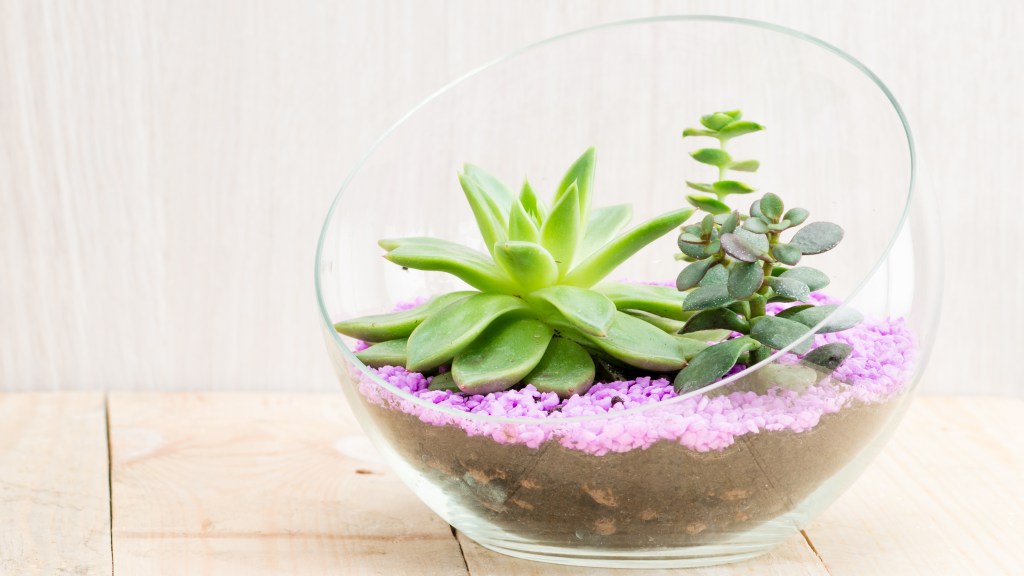
For an easy-made display with a bright and modern look, Buzo suggests pairing succulents with cheery pink gravel in an angular bowl. “I like that this terrarium has a minimalist look,” she says. “It makes a nice, simple accent that people don’t have to put too much thought into.”
To create this display, place a layer of pebbles in the bottom of bowl (for drainage), then pour in cactus potting mix (available at garden centers) and nestle the roots of an echeveria and a jade plant in the soil. Add pink aquarium gravel to the top of the soil. Give bright light and water when soil is dry.
Related: Garden Pro: Growing Your Own Rosemary From Cuttings Is Easier Than You’d Think
Terrarium idea #3: Leafy lightbulbs
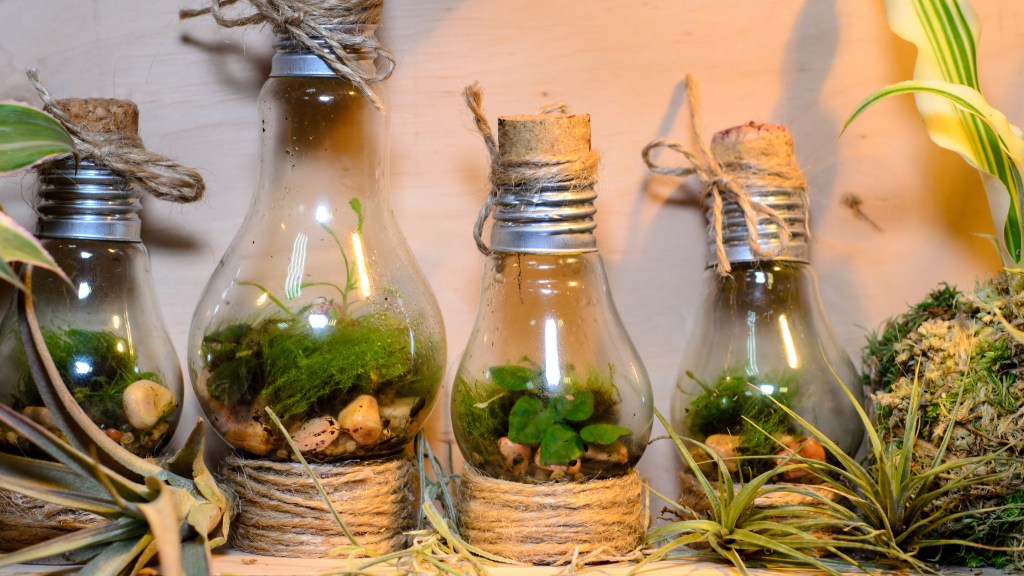
These unexpected mini terrariums add color and interest to a nightstand, bookshelf or other small space. To make, simply fill the base of a hollowed-out lightbulb or a lightbulb-shaped jar, like Glass Light Bulb Jar with Gold Lid (Buy from Amazon, $10.95), with pebbles and potting soil, then use tweezers or chopsticks to place mini ferns and spiky moss on top. For a fun DIY “plant stand” that gives your bulbs stability, cut a toilet paper tube into thirds and wrap twine around each piece, hot-gluing it in place as you go until the pieces are fully covered. Rest a bulb into each tube stand to finish. For the healthiest plants, mist weekly and place in indirect light.
Related: Plant Pros: 7 Genius Ways to Water Plants While You’re Away + One Hack Never To Try
Terrarium idea #4: An air plant ornament
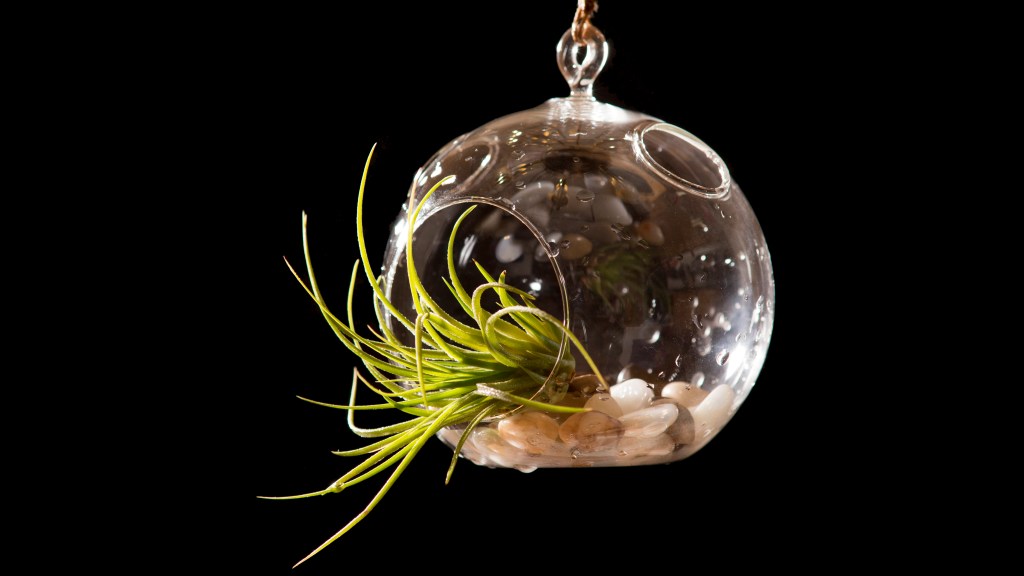
“A glass globe is the perfect home for a variety of air plant species,” notes Maria Colletti, author of Terrariums: Gardens Under Glass and Living Decor. “Plus, the globes can be hung just about anywhere to add a dazzling decor element to a bare spot.” To create each, spoon a layer of sand or small pebbles into the bottom of a glass globe terrarium, like TQVAI 4 Pack Hanging Glass Globe Air Planter Terrarium (Buy from Amazon, $9.99), to absorb and catch excess water, preventing plant rot. Mist a small air plant (like capitata or ionantha) with water and set on sand or pebbles. Thread a length of jute through the globe’s hook and hang in a spot that gets bright, indirect light. Mist plant twice weekly.
Terrarium idea #5: A Venus flytrap fish bowl
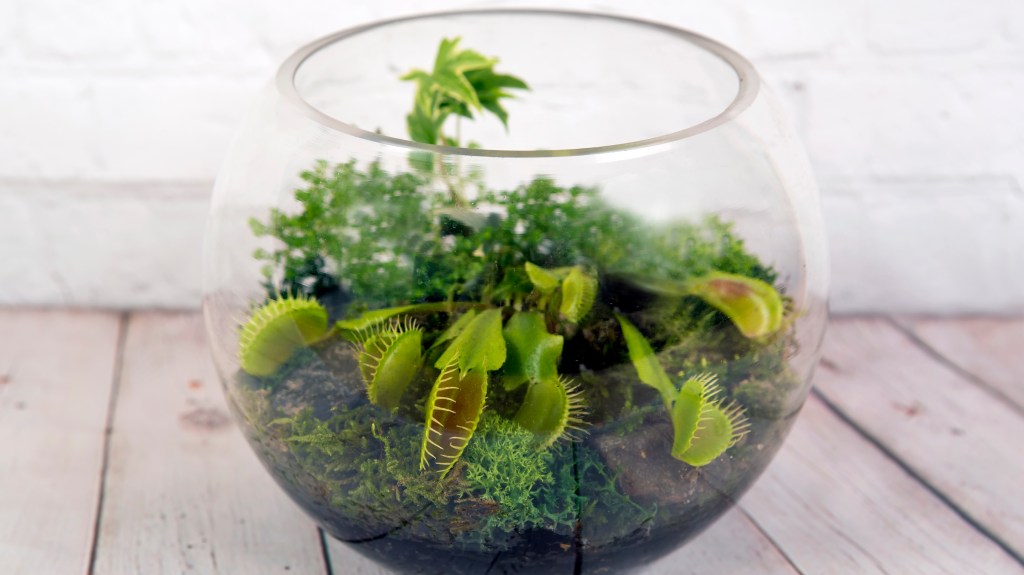
Using carnivorous plants, like Venus flytraps, offers a fresh take on a traditional terrarium. To create the display, fill the bottom third of a glass fish bowl or round vase with pebbles for drainage, then an equal layer of sphagnum moss to hold in moisture. Add an inch of activated charcoal, like Horticultural Charcoal by Perfect Plants (Buy from Amazon, $14.99) to absorb bacteria. Top with potting soil and water until the soil feels a bit soggy, then nestle in roots of Venus flytrap plants and baby’s tears plants or a sprinkling of decorative moss for added interest. Water weekly and keep the terrarium in medium to indirect light. Ask the garden supply store where you purchase the plants about feeding.
More ways to style a terrarium
A terrarium offers a great opportunity to get creative. Not only can you use your imagination when it comes to designing the layout for the plants, but you can add quirky layers to your terrarium to make it unique. When it comes to styling, consider tucking in colored pebbles, beachy figurines from the craft store, seashells or even a little glitter or rhinestones for extra sparkle when it hits the sunlight in the morning. You can make your terrarium totally unique and your own to fit your (or a loved one’s) decor and design aesthetic.
This article originally appeared on our sister site, Homes to Love.


